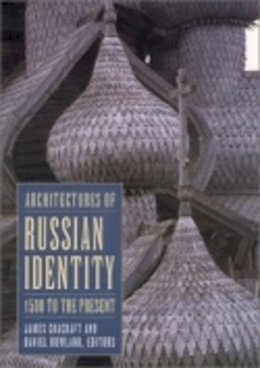James Cracraft is Professor of History and University Scholar at the University of Illinois at Chicago. His books include The Petrine Revolution in Russian Architecture. Daniel Rowland is Director of the Gaines Center for the Humanities at the University of Kentucky and has published extensively on early modern Russian political culture.
This fascinating, highly rewarding book performs a pioneering role in our fast-growing studies of national identity formation. It adds the largely hitherto ignored element—architecture—in the creation of a self-image for the Russian state, its rules, and citizens.... This innovative and informative book is highly recommended, both for classroom instruction and individual enjoyment. - Elizabeth Kridl Valkenier, Columbia University (Canadian Journal of History) Although architectural history intersects with other disciplines, for example, history, anthropology, sociology, and politics, those fields have not traditionally made architecture a primary concern. In recent years, all that has changed. The essays in Architectures of Russian Identity are by historians primarily, but linguistics, literature, geography, and political science are also represented. Despite the diverse academic disciplines of its contributors, the book is remarkably seamless in tone and methodology, perhaps because architecture has long been understood as an art particularly rich in social and historical symbolism. - Janet Kennedy, Indiana University (The Russian Review) For the most part this is a book about the many identities of Russia's built environment and the truths that unfold from them.... This is an important book; really the first of its kind, so far as this reviewer knows, to attempt interpreting Russian architectural history. Letting the artifacts speak for themselves is a splendid idea, one that could easily lend itself to other works of this type. These are scholarly essays, well documented and adequately illustrated. - Albert J. Schmidt, The George Washington University (Slavic Review) This is a volume which engages with many popular scholarly concerns of recent times, for example the study of identity, nationalism, Orientalism, colonialism, memory, and the invention of tradition. It also illustrates very well the recent erosion of boundaries between academic disciplines in the humanities and social sciences. Surveying a period of over four hundred and fifty years, from the age of Ivan the Terrible to the post-Soviet era, the fourteen contributors approach subjects such as architecture, town planning, painting, and sculpture from a variety of perspectives, including the perspectives of intellectual history, literary history, and political science as well as architectural history and the history of art. In the process they persistently explore the contexts in which various artifacts, buildings, gardens, designs, literary works, representations of landscape, and monuments were produced and the meanings that they may yield.... The volume has a pleasing coherence. This merit is partly due to judicious editing and cross-referencing. However, it also stems from the consistency of the contributors' multidisciplinary approach and the recurrence of certain themes, notably the exploitation of buildings or other artifacts for political purposes and their function as a means of establishing, confirming or reformulating national identity. Moreover, the standard of scholarship (supported by plentiful black-and-white illustrations) is consistently high. Scholars working in this relatively unploughed territory are therefore likely to find the volume a useful source of reference and inspiration for many years to come. - Derek Offord, University of Bristol (Slavonica)

